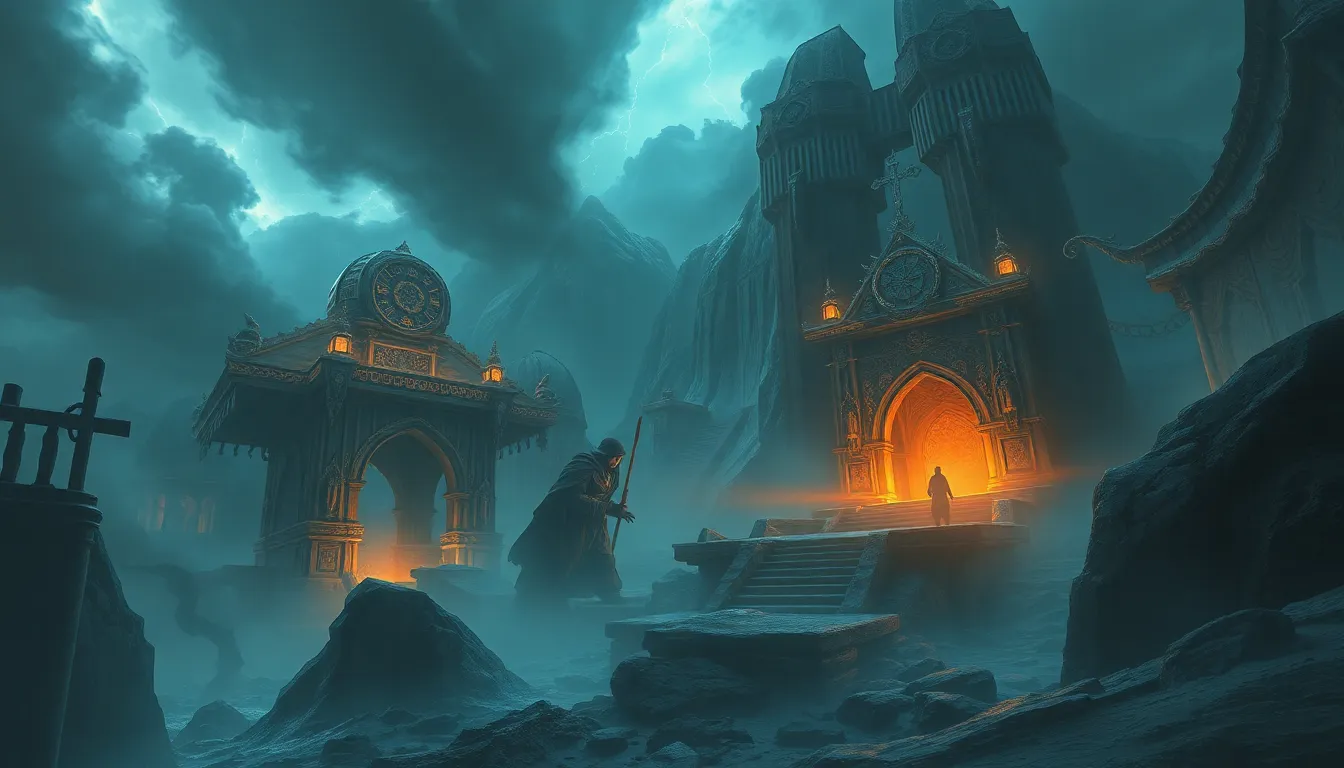The Allure of the Huldra: Beauty, Deception, and the Human Soul
I. Introduction
The Huldra, a captivating figure in Scandinavian folklore, embodies a complex interplay of beauty and deception. Often depicted as a stunningly beautiful woman with a hidden, animalistic tail, the Huldra serves as a reminder of the dual nature of allure and danger. This article aims to explore the multifaceted representation of the Huldra and its profound implications for understanding the human soul.
II. The Origins of the Huldra Legend
The legend of the Huldra has its roots deeply embedded in Scandinavian folklore, with its origins tracing back to the oral traditions of the Nordic countries. Historically, these tales were passed down through generations, reflecting the values, fears, and aspirations of the people.
Across various cultures, the Huldra myth manifests in different forms, yet the core elements remain consistent. In Swedish, Norwegian, and Danish stories, the Huldra is often portrayed as a forest spirit, embodying the wilderness and its mysteries. The role of nature is paramount; the Huldra is both a guardian of the forest and a harbinger of danger to those who disrespect the natural world.
- In Sweden, she is often seen as a protector of the woods.
- In Norway, tales depict her as a seductress who lures men into the wilderness.
- In Denmark, the Huldra is sometimes associated with the underworld, suggesting a darker aspect to her character.
III. The Huldra’s Enchanting Beauty
The beauty of the Huldra is legendary, described as enchanting and otherworldly. With long flowing hair, often said to be adorned with flowers, and skin that glows with a radiant light, she captivates anyone who encounters her. However, it is her hidden tail that serves as a constant reminder of her true nature, symbolizing the duality of her existence.
Beauty in folklore often carries deep symbolism. It is a reflection of nature’s allure but also a warning of the dangers that lie beneath the surface. The Huldra’s beauty impacts human perception, evoking desire and admiration, while simultaneously challenging individuals to look beyond appearances. This duality prompts critical questions:
- How do we define beauty?
- What lies beneath the surface of enchanting facades?
IV. The Deceptive Nature of the Huldra
While the Huldra is celebrated for her beauty, she is equally recognized for her deceptive nature. She embodies a duality: a seductress who entices men into the forest, where they may never return. Many tales illustrate how she lures unsuspecting victims with her charm, only to reveal the peril that awaits them.
These stories often serve as cautionary tales, warning of the consequences of succumbing to temptation. The Huldra’s allure can lead to:
- Loss of direction in the wilderness.
- Separation from loved ones.
- Tragic fates for those who ignore the signs of danger.
V. The Huldra as a Reflection of Human Emotions
The Huldra’s complex character provides a rich tapestry for exploring human emotions. Themes of love, desire, and betrayal are intricately woven into her narratives. She embodies the paradox of being both a protector and a predator, reflecting the complexities of human relationships.
In her interactions with humanity, the Huldra can be seen as:
- A muse inspiring creativity and passion.
- A symbol of unrequited love and longing.
- A representation of the darker aspects of desire, such as obsession and betrayal.
Psychological interpretations of the Huldra figure reveal much about human behavior, suggesting that she represents our inner struggles with temptation and morality.
VI. The Huldra in Modern Culture
In contemporary culture, the Huldra continues to captivate audiences through literature, art, and media. Modern interpretations often reimagine her character, exploring themes relevant to today’s society. The Huldra appears in novels, films, and television shows, often portrayed as a complex figure navigating the intricacies of human emotion.
Her influence can be seen in various forms:
- In literature, authors explore the psychological depths of her character.
- In art, she is often depicted as a figure of beauty and mystery.
- In modern media, her tales are reinterpreted to address contemporary issues, such as empowerment and environmentalism.
VII. Lessons from the Huldra Myth
The tales of the Huldra offer profound lessons about beauty and truth. They urge us to reflect on the moral implications of deception, not just in romantic relationships but in all aspects of life. The allure of beauty can often blind us to underlying truths, prompting critical self-examination.
Through the Huldra, we gain insights into:
- The importance of discernment in relationships.
- The consequences of ignoring the complexities of human emotions.
- A deeper understanding of the human soul and its intricacies.
VIII. Conclusion
In conclusion, the Huldra’s allure serves as a powerful representation of the interplay between beauty, deception, and the human soul. Her character invites us to reflect on our perceptions of beauty and truth, challenging us to look beyond the surface. As we navigate our own lives, let us remember the lessons of the Huldra, embracing the complexities of our emotions while remaining vigilant against the dangers that may lie beneath the surface.
Ultimately, the stories of the Huldra beckon us to explore our own desires and the truths we hold, reminding us that every beautiful facade may hide a deeper reality.




